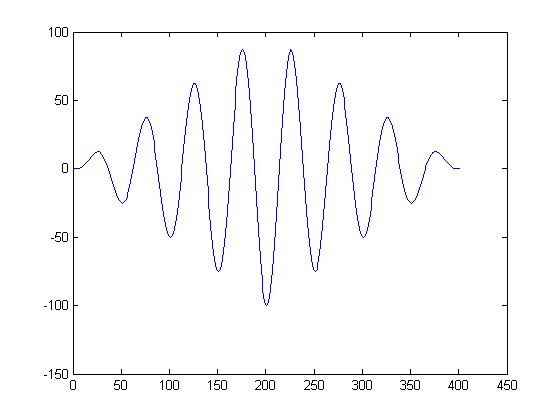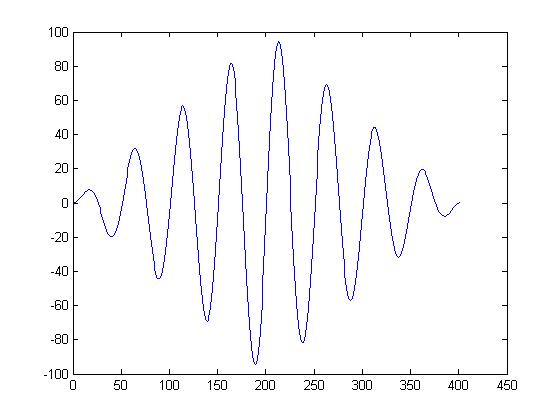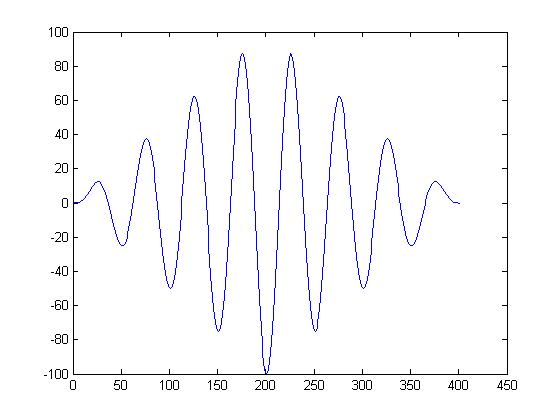HW10
Problem Statement
Present an Octave (or MATLAB) example using the discrete Fourier transform (DFT).
Solution
I decided to show a cross correlation example using MATLAB.
About cross correlation:
First of all correlation is defined as

We may interpret the correlation operator as
which is times the coefficient of projection onto x of y advanced by n samples (shifted circularly to the left by n samples). The time shift n is called the correlation lag, and the function is called a lagged product.
This is then used to define cross correlation as

The term ``cross-correlation comes from statistics, and what is defined here is more properly called a ``sample cross-correlation.
This definition of a sample cross-correlation is only valid for stationary stochastic processes, e.g., ``steady noises that sound unchanged over time. The statistics of a stationary stochastic process are by definition time invariant, thereby allowing time-averages to be used for estimating statistics such as cross-correlations. For brevity below, we will typically not include ``sample qualifier, because all computational methods discussed will be sample-based methods intended for use on stationary data segments.
The DFT of the cross-correlation may be called the cross-spectral density, or ``cross-power spectrum, or even simply ``cross-spectrum:

Matlab has a cross correlation function "xcorr()" but I am not familiar with it and could only find an example on Matlab's website using the following format, it was different in that it didnt have any example signals but gave an outline on defining the matrix's and how they should relate to one another to work.
close all clear all f = 2; % sine wave frequency tmax = 2; % go to 2 seconds theta = pi/4; T = 0.01; t = 0:T:tmax; N = length(t); Nmat = 0:N-2; Zmat = Nmat *0; sig1 = sin(2*pi*f*t); % A alpha signal sig2 = sin(2*pi*f*t); % A beta signal c= conv(sig1,sig2); %test of matrix size %zeropad both vectors to length N1+N2-1 to avoid cyclic convolution sigA = fft([sig1 Zmat]); sigB = fft([sig2 Zmat]); sigC = real(ifft(sigA.*sigB));
cross correlatoin of same wave

cross correlation with 90degree delay

cross correlation with 45 degree delay
[[image:45shift.jpb


